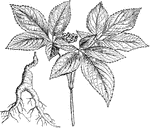
Hungarian Grass
Hungarian Grass (Panicum Germanicum) is an annual forage plant. It germinates readily, withstands the…
Wheat
Wheat (Triticum vulgare) is an annual herbaceous plant. The seed is oblong, or a compressed oval, surrounded…
Wheat
Wheat (Triticum vulgare) is an annual herbaceous plant. The seed is oblong, or a compressed oval, surrounded…
Wheat
Wheat (Triticum spelta) is an annual herbaceous plant. The seed is oblong, or a compressed oval, surrounded…
Wheat
Wheat (Triticum spelta) is an annual herbaceous plant. The seed is oblong, or a compressed oval, surrounded…

Indian Corn
Maize known as corn by most English-speakers, is a cereal grain domesticated in Mesoamerica and subsequently…
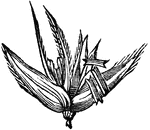
Indian Corn
Maize known as corn by most English-speakers, is a cereal grain domesticated in Mesoamerica and subsequently…

Indian Corn
Maize known as corn by most English-speakers, is a cereal grain domesticated in Mesoamerica and subsequently…

Indian Corn
Maize known as corn by most English-speakers, is a cereal grain domesticated in Mesoamerica and subsequently…

Red Clover
Red Clover (Trifolium pratense) is a species of clover. The Red Clover can readily be distinguished…

Red Clover
Red Clover (Trifolium pratense) is a species of clover. The Red Clover can readily be distinguished,…

Red Clover
Red Clover (Trifolium pratense) is a species of clover. The Red Clover can readily be distinguished…

White Clover
The White Clover ((Trifolium repens) stems are spreading, slender and creeping. The leaves are are inversely…

White Clover
The White Clover ((Trifolium repens) stems are spreading, slender and creeping. The leaves are are inversely…

Lucerne or Alfalfa Plant
Alfalfa or Lucerne (Medicago sativa) is a flowering plant in the pea family Fabaceae cultivated as an…

Lucerne or Alfalfa Plant
Alfalfa or Lucerne (Medicago sativa) is a flowering plant in the pea family Fabaceae cultivated as an…
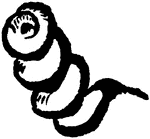
Lucerne or Alfalfa Plant
Alfalfa or Lucerne (Medicago sativa) is a flowering plant in the pea family Fabaceae cultivated as an…

Sainfoin
Sainfion (Hedysarum onobrychis), a hay, is a leguminous plant with many straggling, tapering, smooth,…
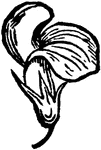
Sainfoin
Sainfion (Hedysarum onobrychis), a hay, is a leguminous plant with many straggling, tapering, smooth,…

Sainfoin
Sainfion (Hedysarum onobrychis), a hay, is a leguminous plant with many straggling, tapering, smooth,…
Timothy Grass
Timothy Grass is commonly grown for cattle feed and, in particular, as hay for horses. It is relatively…

Pecopteris Tree Fern
Pecopteris, frond of an ancient tree fern, was a form genus of leaves from several unrelated plant groups…
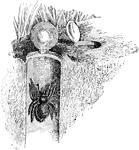
Trapdoor Spider
Spiders (order Araneae) are air-breathing chelicerate arthropods. Trapdoor spiders, of family Ctenizidae,…

Scale Insects
The scale insects are small insects of the order Hemiptera, generally classified as the superfamily…

Scale Insects
The scale insects are small insects of the order Hemiptera, generally classified as the superfamily…

Scale Insects
The scale insects are small insects of the order Hemiptera, generally classified as the superfamily…

Scale Insects
The scale insects are small insects of the order Hemiptera, generally classified as the superfamily…
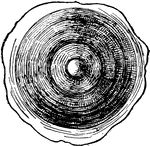
Scale Insects
The scale insects are small insects of the order Hemiptera, generally classified as the superfamily…
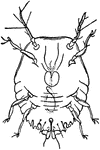
Scale Insects
The scale insects are small insects of the order Hemiptera, generally classified as the superfamily…

Scale Insects
The scale insects are small insects of the order Hemiptera, generally classified as the superfamily…
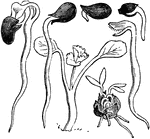
Germination
"Seeds Germinating. The central figure shows a plant which has newly appeared above ground." -Whitney,…

Bowman's Root
The Bowman's Root (Gillenia trifoliata) is an ornamental plant in the rose family, Rosaceae.

Ginger Plant
The Ginger plant (Zingiber officinale) is a flowering plant in the Zingiberaceae family.

Ginkgo Biloba Branchlet
"Gingko biloba, or Salisburia adiantifolia. a, branchlet with male flowers." -Whitney, 1911
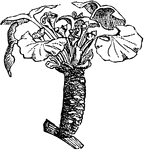
Ginkgo Biloba Branchlet
"Gingko biloba, or Salisburia adiantifolia. b, branchlet with female flowers." -Whitney, 1911

Immature Ginkgo Seed
"Gingko biloba, or Salisburia adiantifolia. c, naked seed, immature." -Whitney, 1911

Mature Ginkgo Seed
"Gingko biloba, or Salisburia adiantifolia. d, naked seed, mature." -Whitney, 1911
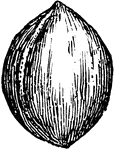
Mature Ginkgo Seed
"Gingko biloba, or Salisburia adiantifolia. e, naked seed, mature, deprived of the outer fleshy testa."…

Sea Milkwort
"Flowering Branch of Glaux maritima. GLAUX. A primulaceous genus of plants, consisting of a single species,…

Honey Locust
"Branch and Pod of Honey-locust (Gleditschia triacanthos). GLEDITSCHIA. A genus of leguminous thorny…

Globe Flower
"Globe-flower (Trollius Europaeus). The Trollius Europaeus, a ranunculaceous plant of Great Britain…

Gloriosa
"Flower of Gloriosa superba. GLORIOSA. A genus of tuberous-rooted liliaceaous plants, with opposite…
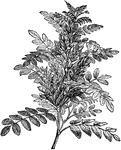
Licorice
"Glycrrhiza glabra. GLYCYRRHIZA. A plant with a sweet root, licorice, also spelled liquorice. A genus…

Gordonia
"Flower of Gordonia pubescens. GORDONIA. A ternstroemiaceous genus, of two species, very ornamental…
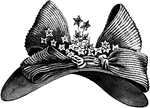
Lady's Large Hat
This lady's large hat is curved to the shape of the head with a ribbon and small plant leaves in the…

Grass Flower
"Graminae. Flower of a Grass, the glumes are removed. GRAMINAE. In botany, the largest order among endogenous…
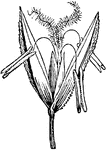
Grass Flower
"Graminae. Flower of a Grass. GRAMINAE. In botany, the largest order among endogenous plants except…
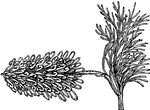
Spider-Net Grevillea
The Spider-Net Grevillea is a small shrub in the Proteaceae. "Flowering Branch of Grevillea Thelemanniana."…
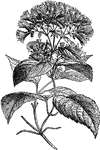
Guaco Branch
"Flowering branch of Guaco (Mikania guaco). GUACO. The Mikania Guaco, a climbing composite of tropical…
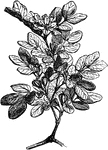
Holywood
The Holywood or Lignum Vitae (Guaiacum sanctum) is a plant in the Zygophyllaceae family of caltrops.…
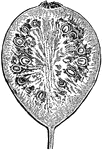
Apple Guava
Section of the fruit of the Apple Guava (Psidium guayava), a small tree in the Myrtaceae family.
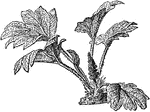
Chilean Rhubarb
The Chilean Rhubarb (Gunnera tinctoria) is a large-leaved plant in the Gunneraceae family. It was also…

Kentucky Coffeetree
The Kentucky Coffeetree (Gymnocladus dioicus) is a tree in the Fabaceae family of legumes. It was also…
Silver Fern
The Silver Fern (Cyathea dealbata) is a plant in the Cyatheaceae family of tree ferns. It was also known…

Gynandria of Bletia
"Gynandria. A, section of flower of Bletia' B, separated column of same, composed of the united style…

Borage Gynoecium
"Gynobase. Section of Gynoecium of Borage, gynobase (a) bearing the carpels and style." -Whitney, 1911
Gynandropsis
"Flower of Gynandropsis. a, gynophore. GYNOPHORE. In botany, an elongation or internode of the receptacle…

Tripod Flower Stand
This tripod flower stand has a three-legged simple antique design. It is used to place plant pots and…
